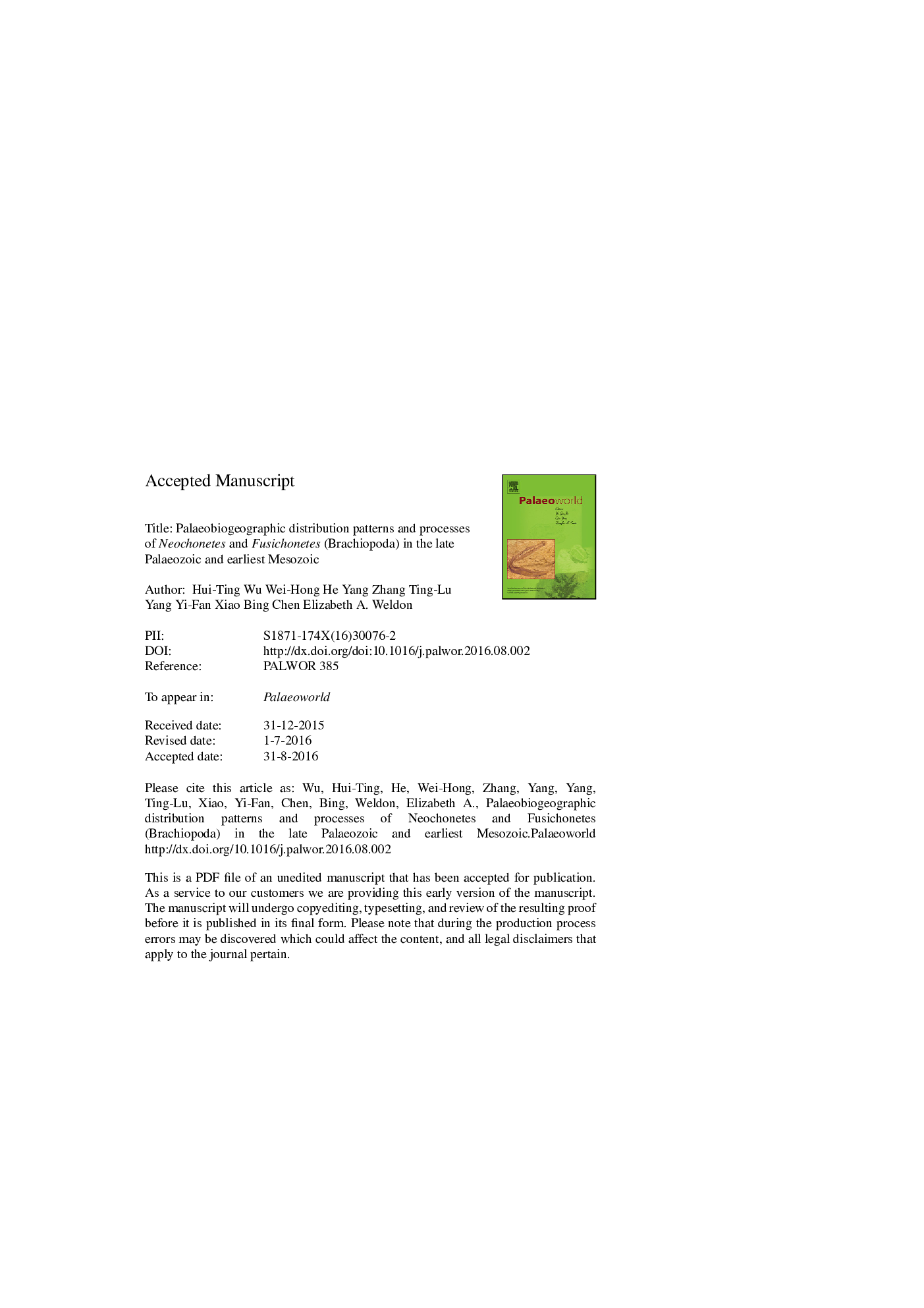| Article ID | Journal | Published Year | Pages | File Type |
|---|---|---|---|---|
| 5788275 | Palaeoworld | 2016 | 30 Pages |
Abstract
The global palaeobiogeographic distributions of two resembling genera, Neochonetes and Fusichonetes (Brachiopoda), from the Carboniferous to Griesbachian are analysed. This analysis provides insight into the biotic response of two related genera to changing palaeoclimate, regional tectonics, and environmental crises. Neochonetes originated in the equatorial area in the Mississippian, and it mostly retained this position during the peak of the glaciation in the Carboniferous-Permian ice age (namely in the Pennsylvanian). Neochonetes then dispersed globally during the Cisuralian when the climate became warmer and the ice sheet started to retreat. In the Guadalupian and Lopingian, following the closure of the Ural seaway at the end of the Cisuralian and the regression at the end-Guadalupian, Neochonetes almost disappeared in the western part of Gondwana. Subsequently during the Lopingian the genus retracted to the middle- and low-latitude Palaeo-Tethys and Tethys. In comparison, Fusichonetes originated in the equatorial area in the late Guadalupian and was still present in that area in the Lopingian. Both genera occurred only in South China in the Griesbachian. It is inferred that this could be related, not only to the deteriorated palaeoenvironmental conditions (e.g., anoxia, global warming) leading up to the extinction of most of the Neochonetes and Fusichonetes species in other areas, but also to the better physiological adaptation of the smaller shells of Neochonetes and Fusichonetes species in South China.
Keywords
Related Topics
Physical Sciences and Engineering
Earth and Planetary Sciences
Palaeontology
Authors
Hui-Ting Wu, Wei-Hong He, Yang Zhang, Ting-Lu Yang, Yi-Fan Xiao, Bing Chen, Elizabeth A. Weldon,
